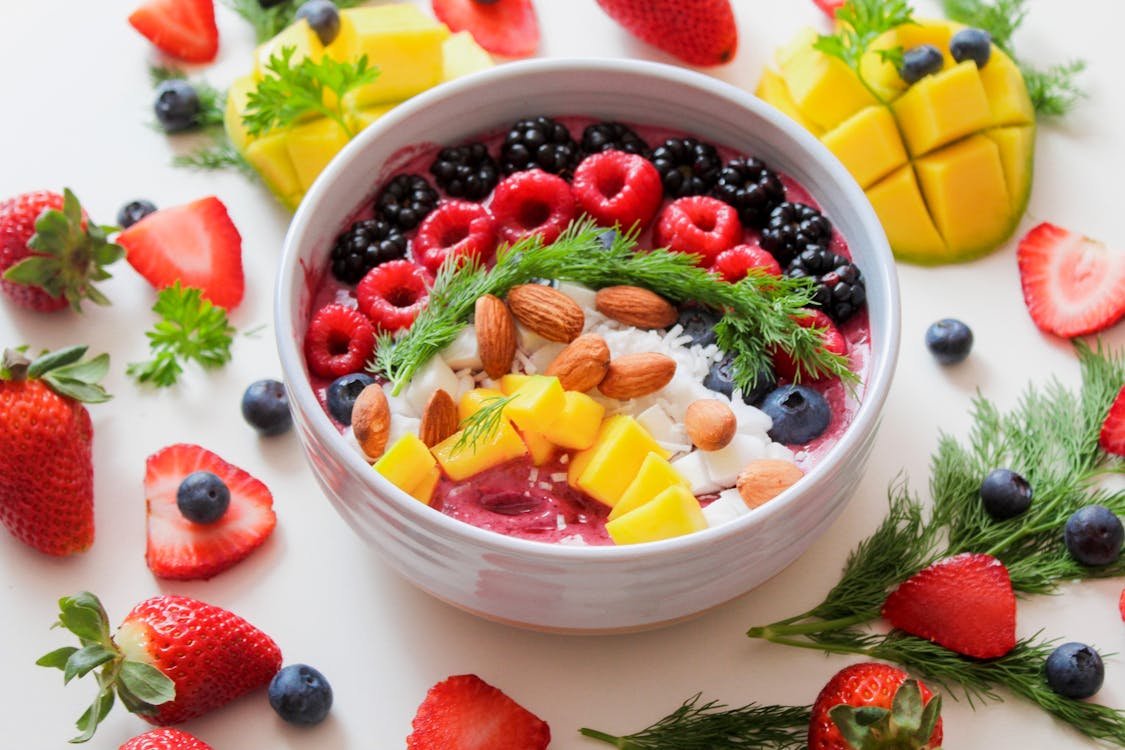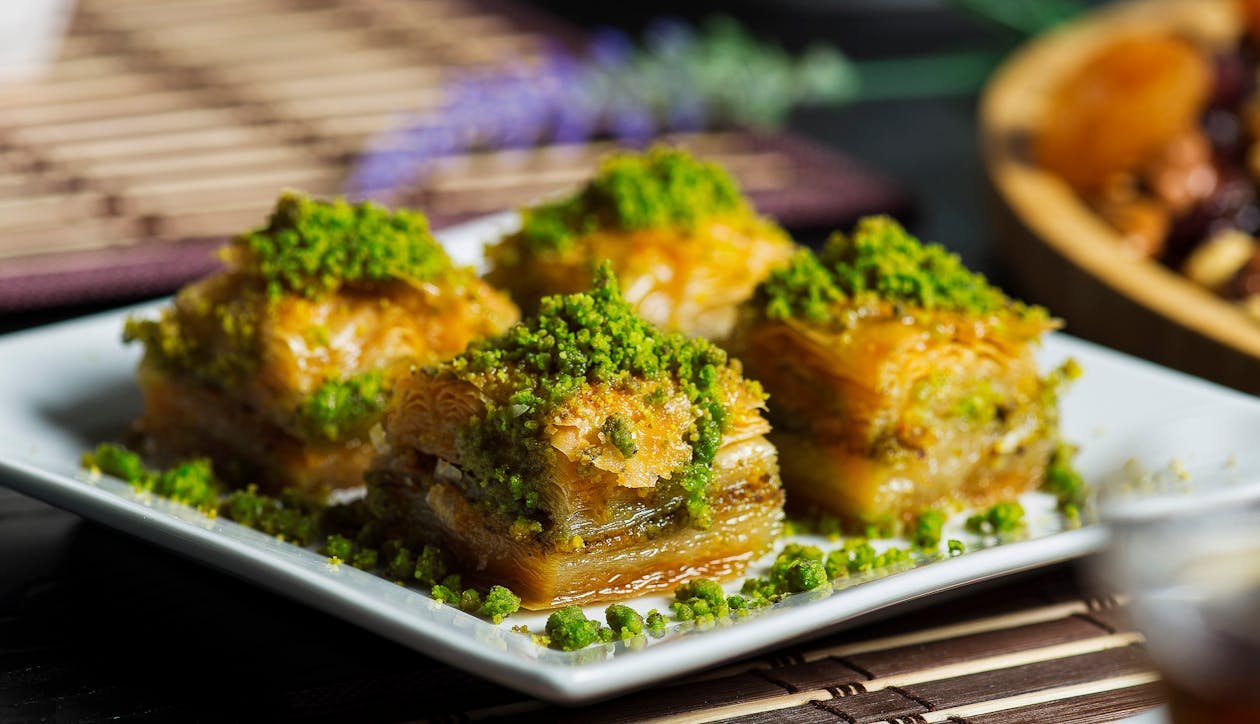Asia is home to some of the most diverse and delicious desserts in the world. From the rich, syrupy sweets of the Middle East to the delicate, coconut-infused treats of Southeast Asia, Asian desserts offer a unique combination of flavors, textures, and ingredients. Whether you are a fan of sweet, savory, creamy, or fruity desserts, there’s something for everyone. This blog post will take you on a delicious journey to explore some of the amazing and most iconic Asian desserts that you must try.
1. Mochi (Japan)
Mochi is one of Japan’s most beloved desserts. Made from glutinous rice (also known as sticky rice), this chewy, soft treat is available in various flavors and forms. The rice is pounded until it becomes a smooth, elastic dough. Traditionally, it is filled with red bean paste, but modern variations include fillings like matcha (green tea), chocolate, or fruits.
One of the most popular forms of mochi is daifuku, a small, round version filled with sweet fillings such as anko (sweet red bean paste). Mochi can also be enjoyed frozen, in a treat called mochi ice cream, where a ball of ice cream is encased in a layer of chewy mochi. The cool, creamy ice cream paired with the chewy texture of the mochi offers a delightful contrast of temperatures and textures.
2. Baklava (Middle East)
Although the Middle East is not technically part of East Asia, baklava is a dessert that has made its way into many Asian cultures due to trade routes and cultural exchanges. Originating from the Ottoman Empire, baklava is a rich pastry made from layers of filo dough, butter, and finely chopped nuts (typically pistachios, walnuts, or almonds), all sweetened with honey or syrup. The combination of crispy, flaky pastry with sweet syrup and crunchy nuts makes baklava a luxurious, indulgent dessert.
In countries like Turkey, Iran, and Lebanon, baklava is often enjoyed with Turkish coffee or strong tea, making it a popular choice for social gatherings and festive occasions.
3. Kulfi (India)
Known as traditional Indian ice cream, kulfi is a creamy, dense dessert made with full-fat milk, sugar, and flavorings such as cardamom, saffron, pistachios, or rose water. Unlike Western ice cream, which is churned while freezing to create a light, airy texture, kulfi is frozen without churning, resulting in a dense, solid consistency.
Kulfi is often served on a stick, similar to a popsicle, or in small pots. Popular variations include malai kulfi, which is flavored with milk and cream, and pistachio kulfi, which is a nutty version with crushed pistachios mixed in. Kulfi is especially refreshing during the hot summer months and is frequently found at street food stalls in India and Pakistan.
4. Cheesecake (Asia’s Unique Versions)
While cheesecake is traditionally associated with Western cuisine, various countries in Asia have their own unique takes on the dessert. One of the most popular versions is the Japanese cotton cheesecake, which is a lighter, fluffier take on the classic. The texture is much airier, almost like a souffle, and it has a subtle sweetness. Unlike its Western counterpart, Japanese cheesecake is not dense or heavy, making it a refreshing treat that is perfect for any occasion.
Another popular version is the Chinese steamed cheesecake, which uses a combination of cream cheese and a light batter to create a soft, delicate dessert that is often served warm. Steamed cheesecake, with its melt-in-your-mouth texture, offers a beautiful fusion of Western and Eastern dessert styles.
5. Khanom Chan (Thailand)
Khanom Chan, also known as Thai layer cake, is a beautiful, colorful dessert that features delicate layers of sweetened coconut milk, rice flour, and sugar. Each layer is steamed until firm and then stacked on top of one another. The dessert is often made with vibrant colors that are natural—using ingredients like pandan leaves for green, butterfly pea flowers for blue, and coconut for white.
The result is a chewy, fragrant dessert with a subtle sweetness, making it an excellent option for those who enjoy coconut-based sweets. Khanom Chan is often served at special occasions like weddings and festivals and is admired for its visually appealing layers.
6. Bingsu (Korea)
Bingsu is a popular Korean dessert made from finely shaved ice, typically topped with sweetened red bean paste, condensed milk, and various toppings such as fresh fruit, nuts, or matcha powder. It is a refreshing treat, especially during the hot summer months.
The most traditional version of bingsu is the patbingsu, which includes sweet red beans as a topping. However, over time, bingsu has evolved to include various innovative toppings, such as chocolate, cheese, and even cereal. The contrast between the finely shaved ice and the richness of the toppings makes bingsu a delightful treat for those looking for something cool and refreshing.
7. Halo-Halo (Philippines)
Halo-Halo is a Filipino dessert that is a perfect combination of textures and flavors. The name “halo-halo” literally means “mix-mix,” and the dessert consists of a variety of ingredients like shaved ice, sweetened fruits (like jackfruit, sweet potatoes, and bananas), jellies, beans, corn, and flan. It’s topped with leche flan (a Filipino custard), purple yam (ube), and sometimes even ice cream.
The beauty of halo-halo lies in its mix of flavors, ranging from the sweetness of the fruits to the creaminess of the flan and the rich, purple ube. It’s an explosion of colors and textures in one bowl, making it a fun and satisfying dessert to enjoy during the scorching heat of the Philippines’ summer.
8. Tapioca Pudding (Southeast Asia)
Tapioca pudding, or sago pudding, is a simple yet delicious dessert enjoyed across Southeast Asia. Made from tiny tapioca pearls cooked in coconut milk or sweetened water, the dish is often flavored with pandan, vanilla, or coconut. It has a smooth, creamy texture and a subtle sweetness that makes it comforting and perfect for all ages.
In countries like Thailand and Malaysia, tapioca pudding is often topped with fresh mango slices or served as a part of a larger meal, either hot or cold. The tapioca pearls’ chewy texture is a key feature of this dish, making it a satisfying dessert.
9. Sushi Dessert (Japan)
While sushi is typically associated with savory dishes, Japan also has a fascinating version of sushi dessert, often referred to as “dessert sushi.” These desserts are created to mimic the look of traditional sushi rolls, but instead of fish and rice, the ingredients include sweets like fruit, cake, or sweetened rice.
One popular version is matcha sushi, where a layer of sponge cake is topped with a sweetened red bean paste and rolled into a sushi-like shape. Topped with fruit or whipped cream, it’s a playful and creative take on both sushi and dessert.
10. Chendol (Southeast Asia)
Chendol is a popular Southeast Asian dessert that originated in Malaysia and is now enjoyed throughout the region, including in Singapore, Indonesia, and Thailand. It consists of green pandan-flavored rice flour jelly noodles, which are served with shaved ice, coconut milk, and palm sugar syrup. The chewy jellies contrast with the creamy coconut milk and the sweetness of the syrup, creating a refreshing and indulgent treat.
Chendol can also include additional ingredients like sweet corn, red beans, and jackfruit, making it a versatile and customizable dessert. Whether enjoyed on a hot afternoon or as part of a festive gathering, chendol is a cooling and delicious treat.
Asian desserts offer an incredible range of flavors and textures, from creamy and rich to light and refreshing. Each dessert tells a unique story of the culture, ingredients, and traditions of its origin. Whether you are indulging in a chewy piece of mochi, savoring the crispy sweetness of baklava, or enjoying the refreshing flavors of halo-halo, there is no shortage of delightful sweets to explore. So, next time you’re in the mood for something sweet, consider trying one (or more) of these mouthwatering Asian desserts to satisfy your cravings.














